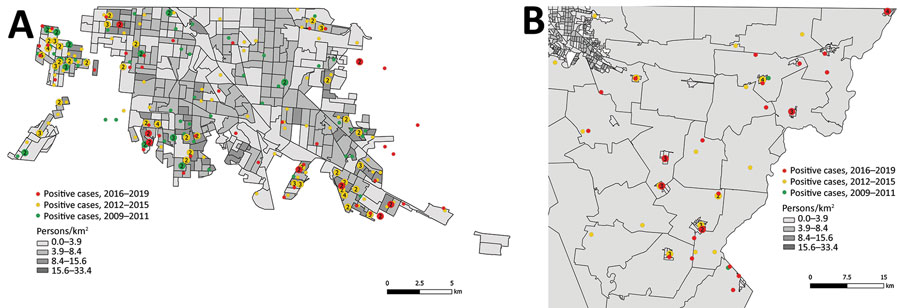Volume 27, Number 6—June 2021
CME ACTIVITY - Synopsis
Rocky Mountain Spotted Fever in a Large Metropolitan Center, Mexico–United States Border, 2009–2019
Figure 4

Figure 4. Geographic distribution of all PCR-positive cases of Rocky Mountain spotted fever in Mexicali (A) and the Mexicali Valley (B), Mexico, 2009–2019. Outlined areas represent census-related Basic Geostatistical areas established by Mexico’s National Institute of Statistics and Geography. Numbers in circles represent the number of cases in each location.
Page created: April 15, 2021
Page updated: May 20, 2021
Page reviewed: May 20, 2021
The conclusions, findings, and opinions expressed by authors contributing to this journal do not necessarily reflect the official position of the U.S. Department of Health and Human Services, the Public Health Service, the Centers for Disease Control and Prevention, or the authors' affiliated institutions. Use of trade names is for identification only and does not imply endorsement by any of the groups named above.